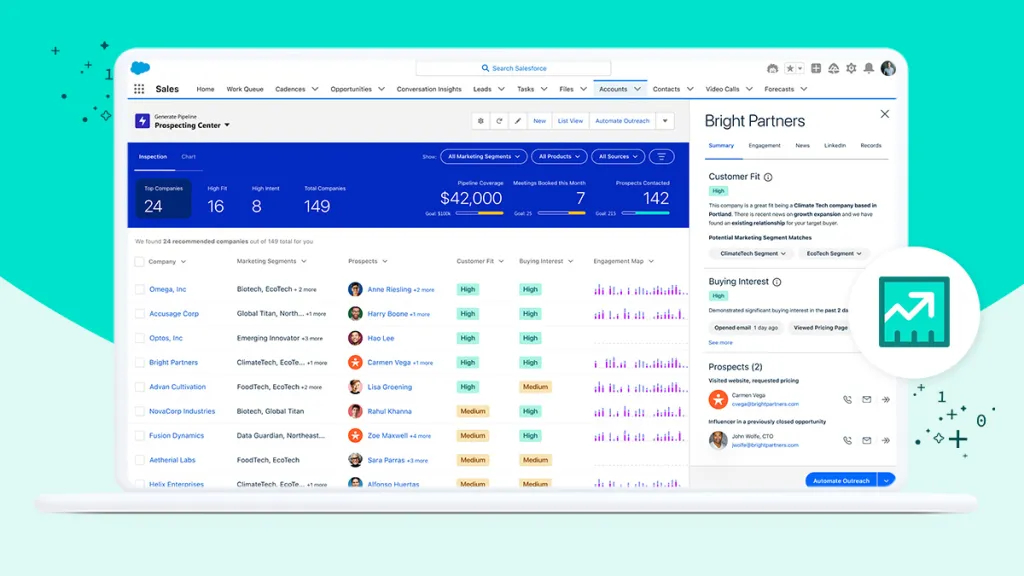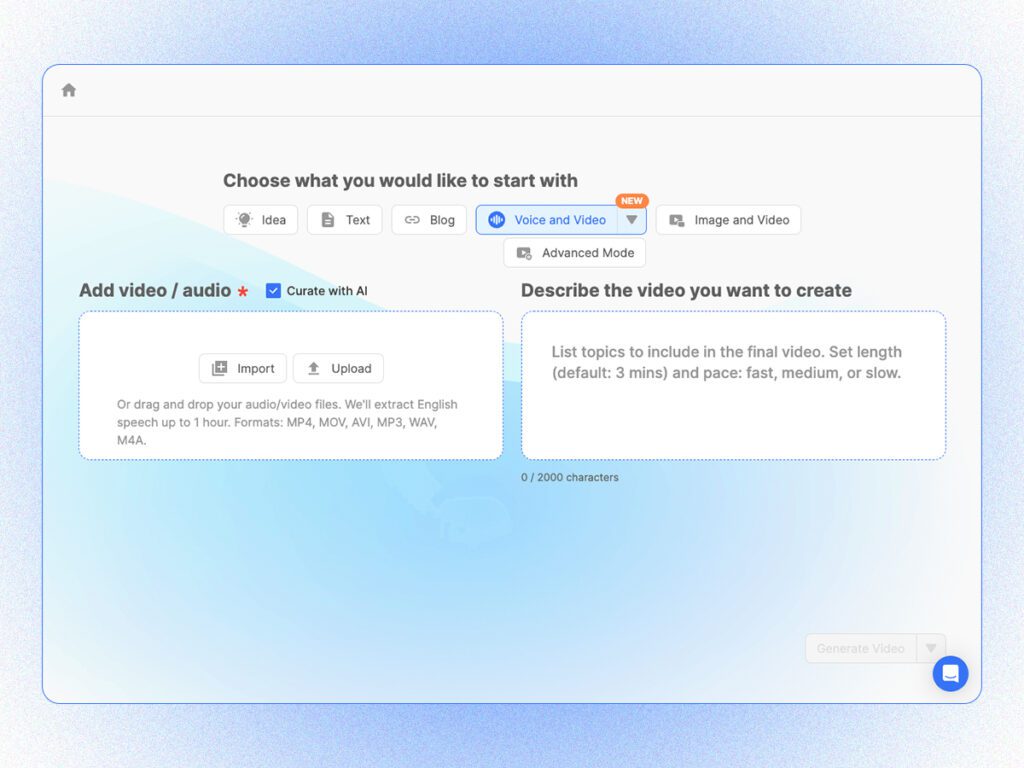In the high-stakes game of business, developing a sales strategy for 2024 is like setting the course for a ship amidst the swirling currents of market trends, consumer behavior, and technological advancements. It’s not just about having a map; it’s about navigating with precision, adaptability, and insight. Whether it’s leveraging the cutting-edge capabilities of AI to streamline operations and personalize customer interactions or harnessing the power of video to revolutionize engagement, every move counts.
Analyzing Your Current Sales Strategy
Diving into the heart of developing a sales strategy for 2024 begins with a thorough analysis of your current approach. It’s about cracking open the hood and understanding what’s driving your sales engine—what’s working, what’s not, and why. This exploration not only highlights opportunities for enhancement but also paves the way for adopting new, cutting-edge methods that align with evolving market demands and consumer behaviors.

Identifying Strengths and Weaknesses
The first step in analyzing your current sales strategy is pinpointing its strengths and weaknesses. Strengths might include a high-performing sales team, a strong brand reputation, or a unique product offering. Weaknesses could be anything from gaps in market coverage to inefficient sales processes. Understanding these aspects allows businesses to reinforce their strong points while addressing and mitigating weaknesses, setting the stage for a more robust sales strategy.
Gathering Feedback from Sales Teams and Customers
Feedback is gold in the realm of sales strategy development. Engaging with your sales team and customers to gather insights provides a 360-degree view of what’s working and what’s not. Sales teams can provide firsthand accounts of challenges and successes in the field, while customers can offer valuable perspectives on what they value and what could be improved. This feedback loop is crucial for making informed adjustments to your sales strategy.
Leveraging Data Analytics for Insights
In today’s data-driven world, leveraging data analytics offers unparalleled insights into developing a sales strategy. Businesses should focus on metrics such as sales conversion rates, customer acquisition costs, and customer lifetime value. Analyzing these data points helps identify patterns, trends, and areas for improvement. For instance, a low conversion rate might suggest the need for better qualification of leads or an enhanced sales pitch. Data analytics turns raw numbers into actionable insights, guiding strategic decisions that boost sales performance.
Embracing Technological Advancements
With the landscape of sales constantly evolving, embracing technological advancements is no longer optional—it’s imperative. The right technology can revolutionize how you engage with customers, manage relationships, and streamline your sales processes.
Integrating AI Tools for Enhanced Customer Engagement
The embrace of technological advancements, especially Artificial Intelligence (AI), is transforming the sales landscape. Salesforce’s Sales AI, for example, seeks to enhance productivity, decision-making, and customer engagement. Their generative AI tools, for instance, simplifies email drafting and follow-ups by auto-generating personalized messages using CRM data, boosting sales team efficiency. Predictive AI goes a step further by automating data entry and providing insights into deals and forecasts, thereby accelerating decision-making processes. Moreover, conversation intelligence technologies offer deep dives into sales calls, enabling teams to refine strategies based on customer feedback and trends.

AI doesn’t stop at internal processes; it extends its reach to prospect engagement, with tools designed to streamline lead qualification and enhance relationship management. This integration of AI into sales processes not only speeds up operations but also could strengthen connections with customers. By adopting AI technologies like Sales AI, sales teams might be able to unlock new levels of productivity and customer engagement.
Utilizing CRM Systems for Better Relationship Management
Customer Relationship Management (CRM) systems are the backbone of effective sales strategy. The best CRMs, such as Salesforce, HubSpot, and Zoho, offer comprehensive tools for tracking customer interactions, managing leads, and automating sales tasks. These systems not only enhance efficiency but also provide valuable insights into customer behavior, enabling sales teams to tailor their approaches for better outcomes.
The Role of Automation in Sales Processes
Automation is transforming sales processes, making them more efficient and allowing sales teams to focus on what they do best—selling. From automating routine administrative tasks to streamlining lead nurturing campaigns, automation tools are invaluable for enhancing productivity and efficiency. This shift not only optimizes the sales process but also enhances the customer experience by ensuring timely and relevant interactions.
Enhancing Sales Team Skills and Morale
A pivotal element in developing a sales strategy for 2024 involves focusing on the engine behind every sale: the sales team itself. Enhancing the skills and morale of your sales force isn’t just about boosting numbers; it’s about fostering an environment that breeds success and innovation.

Importance of Continuous Training and Development
To thrive in the competitive landscape of 2024, sales teams must embrace a culture of innovation and collaboration. Continuous training and development play a crucial role in this, equipping teams with the latest strategies, technologies, and methodologies. More than just improving skills, it’s about building a mindset geared towards growth and excellence. Incentivizing performance while respecting the individuality of workers creates a motivated workforce that’s ready to tackle challenges head-on and drive sales forward.
Refining Your Customer Targeting Approach
As we shift our focus to the other side of the sales equation—the customers—it becomes clear that a one-size-fits-all approach no longer cuts it. Refining your customer targeting approach means getting to know your audience on a deeper level and adapting your strategies to meet their evolving needs. Let’s explore how segmentation and personalization, understanding changing customer behaviors, and leveraging predictive analysis can reshape your sales strategy for 2024.

The Power of Segmentation and Personalization
Segmentation and personalization are the cornerstones of a modern sales strategy. By dividing your market into distinct groups based on demographics, behaviors, or preferences, you can tailor your messaging and offerings to resonate with each segment. Personalization takes this a step further by crafting experiences and communications that cater to the individual, making each customer feel understood and valued.
Adapting to Changing Customer Behaviors
Customer behaviors are in a constant state of flux, influenced by technological advancements, societal shifts, and market trends. Keeping a pulse on these changes allows businesses to adapt their sales strategies in real-time, ensuring they remain relevant and appealing to their target audience. This agility is crucial for staying ahead in a competitive market.
Using Predictive Analysis for Better Targeting
Predictive analysis is a powerful tool in refining customer targeting. By analyzing data on past customer behaviors, purchases, and interactions, businesses can predict future trends, needs, and preferences. This insight enables them to anticipate market changes and adjust their strategies accordingly. While AI can significantly enhance predictive analysis by processing vast amounts of data at incredible speeds, the core concept doesn’t strictly require AI. It’s about using the data you have to make informed predictions and decisions, setting the stage for a more focused and effective sales strategy.
Streamlining Sales Operations for Efficiency
As you’re developing a sales strategy for 2024, streamlining sales operations is a crucial step towards achieving efficiency and scalability. There are many ways to optimize sales channels, leverage AI to simplify sales processes, and foster a collaborative environment between sales and marketing teams. These strategies are not just about cutting down on time and resources; they’re about creating a seamless flow that enables your team to focus on what they do best—selling.
Optimizing Sales Channels for Your Products
Identifying and optimizing the most effective sales channels for your products is pivotal. This involves analyzing where your target audience prefers to make purchases and aligning your sales efforts accordingly. Whether it’s online marketplaces, direct sales, retail, or B2B platforms, each channel offers unique advantages. The goal is to ensure your products are accessible in the places your customers are looking for them, thereby increasing visibility and sales opportunities.
Simplifying the Sales Process with AI
AI is transforming the sales process, making it more efficient and less cumbersome. AI tools can automate routine tasks, such as data entry and lead qualification, freeing up sales reps to focus on engaging with customers and closing deals. Moreover, AI can provide actionable insights and recommendations, helping sales teams to prioritize their efforts and personalize their approach to meet the specific needs of each prospect.
Enhancing Collaboration Between Sales and Marketing
The synergy between sales and marketing teams is essential for a streamlined sales operation. By working together, these teams can ensure that messaging is consistent, leads are nurtured effectively, and campaigns are aligned with sales goals. This collaboration not only enhances the effectiveness of both departments but also contributes to a cohesive customer journey that can lead to higher conversion rates and customer satisfaction.
Using Video for Sales
In today’s digital age, video has emerged as a powerful tool in the sales arsenal. With the ability to convey messages vividly and personally, video can significantly impact how businesses engage with prospects and customers.

Is Video Appropriate For Sales?
Absolutely, video is increasingly becoming an indispensable tool in the sales toolkit. It offers a way to convey information more engagingly and personally than traditional text-based communication. From product demos to personalized sales messages, video can capture attention, build rapport, and help explain complex information in an easily digestible format. With the growing preference for video content among consumers, leveraging video in sales is not just appropriate—it’s strategic.
Revolutionizing Sales Engagement with Visla

Visla is at the forefront of integrating video into sales strategies. This platform simplifies the creation and sharing of sales videos, enabling teams to produce high-quality, engaging content without the need for extensive video production skills. Whether it’s for product demonstrations, customer testimonials, or personalized sales pitches, Visla empowers sales teams to use video effectively, enhancing engagement and fostering deeper connections with prospects. By making video an integral part of your sales strategy, you can differentiate your approach, capture the attention of your audience, and drive meaningful conversations that lead to conversions.
Measuring and Adapting Your Strategy
A crucial step in developing a sales strategy for 2024 involves not just setting plans in motion but also continuously measuring and adapting those strategies. It’s about establishing a cycle of improvement where feedback and results inform your next move. This approach ensures that your sales strategy remains dynamic, responsive to market changes, and aligned with your overall business objectives.

Setting Realistic and Measurable Goals
The foundation of any effective sales strategy is setting goals that are both realistic and measurable. These goals should stretch your team to achieve more but remain achievable to maintain motivation. Key performance indicators (KPIs), such as sales growth, customer acquisition rates, and customer retention, serve as benchmarks for success. Regular review of these KPIs allows you to gauge the effectiveness of your strategy and make necessary adjustments. This cycle of setting, measuring, and reviewing goals ensures that your sales strategy remains focused and on track.
Staying Agile in a Competitive Landscape
In the fast-paced and ever-changing business environment, agility is your greatest asset. Staying agile means being ready to pivot your strategy in response to new competitors, changing customer preferences, or unforeseen challenges. This agility is cultivated through a culture of continuous learning, openness to change, and flexibility in planning and execution. By fostering an agile approach, you ensure that as you’re developing a sales strategy can adapt to the competitive landscape, leveraging new opportunities and mitigating risks as they arise.
FAQ
How can integrating video into your sales strategy boost engagement and conversions?
Integrating video into your sales strategy, especially with tools like Visla, can significantly enhance engagement and conversions. Videos offer a dynamic way to present products, share testimonials, and convey complex information in an easily digestible format. Visla simplifies video creation, enabling sales teams to craft compelling content that resonates with their audience, setting the stage for higher engagement rates and improved conversion outcomes.

Mark Horiuchi
Mark is a Content Writing Specialist for Visla. In a past life, they’ve worked as a content analyst and product expert for an in-house video content marketing team and a freelance blog writer for a wide range of clients.
